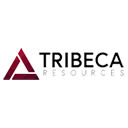Tribeca Resources Upsized Raise Signals Strong Backing for Chilean Copper Growth Story

Tribeca Resources: C$6.5M-funded Chilean copper explorer advancing 10,000m-drilled IOCG flagship + new porphyry play in Chuquicamata belt. Experienced mgmt, 3-project portfolio.
- Tribeca Resources raised C$6.5 million (targeting C$5 million) from 82 investors, with 67 being new, demonstrating strong market interest in Chilean copper exploration during favourable market conditions.
- The company operates three copper projects in Chile at different stages - La Higuera (most advanced with 10,000m drilling), Jiguata (newly acquired porphyry project), and Chiricuto - allowing capital allocation flexibility.
- The flagship coastal IOCG project shows a 1.4km mineralized strike with consistent results averaging $300/meter drilling costs, targeting resource definition after expanding known mineralization zones before formal resource calculation.
- New $15 million option agreement (backend-loaded with $14.5M due year 5) targets large porphyry system in established belt hosting deposits like Chuquicamata, requiring 3,000m drilling over two years with 500m minimum hole depths.
- Partnership with WovenAI analyzing Chile's 1,200+ prospect database (SIGEX) to identify top 50 IOCG targets, leveraging improved data collection requirements and the company's Chilean network for potential future acquisitions.
Tribeca Resources Corporation (TSXV:TRBC), a TSX Venture-listed junior explorer, has emerged as a focused copper exploration company in northern Chile, strategically positioning itself across multiple proven metallogenic belts. CEO Paul Gow, a geologist with extensive experience at Xstrata Copper and Glencore specializing in iron oxide copper gold (IOCG) deposits, recently outlined the company's evolution from a single-project explorer to a diversified portfolio operator. With a fresh C$6.5 million capital injection and three projects at varying stages of development, Tribeca represents an exploration-stage investment in one of the world's premier copper jurisdictions during an increasingly amenable market environment for the metal.
Market Timing Drives Capital Success
The timing of Tribeca's recent financing proved fortuitous. Initially planned for mid-2025, the raise was delayed to finalise the Jiguata property agreement, ultimately closing in September-October. The delay coincided with strengthening copper markets and renewed investor interest in Chilean projects. The company exceeded its C$5 million target, securing C$6.5 million from 82 investors, with 67 being new to the register. Gow observed that some investors were "rotating a little out of gold because it had such a great run," suggesting copper may be "moving into that runup now."
This capital raise reduced management ownership from approximately 32% to 22%, while establishing a more balanced shareholder base. Four or five key investors now hold about 28% of the register, with management's 22% bringing total concentration to roughly 50%. Several existing investors specifically requested pro-rata participation to maintain their positions, indicating strong confidence in the company's direction.
Portfolio Approach: Managing Risk Through Diversification
Tribeca's multi-asset strategy reflects a deliberate approach to early-stage exploration risk management. "When you're in the early stage space, a portfolio is the better way to go," Gow emphasized, contrasting this with single-project developers like Marimaca, Aldebaran Resources, or ATEX that have reached advanced stages. He noted that Aldebaran recently spun out secondary assets, a strategy appropriate once a project reaches development stage, but premature for explorers where "projects can fall over or vice versa pretty quickly."
The portfolio model allows dynamic capital allocation based on results and strategic value. Gow acknowledged this requires careful management: "How do we know that it does not host a 2 billion ton porphyry deposit?" This question drives the company's approach of collecting sufficient data to make informed decisions about advancing or exiting projects.
"The two best results you can get are fantastic intersections that show you there's a big system there or something that shows you there's nothing. And the worst result you can get is something in the middle that makes you say well do we walk or not."
La Higuera: The Coastal IOCG Flagship
La Higuera represents Tribeca's most advanced project, with approximately 10,000 meters of drilling completed across 29 holes at the Gaby target. The project demonstrates the advantages of Chile's coastal IOCG belt: excellent infrastructure, shallow cover (0-70 meters of gravel), and relatively low drilling costs averaging US$300 per meter all-in.
"One of the beauties of that area is that it is relatively shallow. The mineralization basically starts at the base of that gravel."
The Gaby system shows 1.4 kilometers of strike length with consistent mineralization averaging 260-meter drill intersections (implying approximately 130-meter true width for a vertical body), though grades vary from 0.2% to 0.66% copper. Gow described it as a potential "open-pittable bulk tonnage type of operation," though he acknowledged "it's not going to be a high-grade mine" unless higher-grade pods are discovered.
Importantly, La Higuera encompasses five separate targets, with only two drilled to date. The company plans to test a third target, Chirsposo Sur, within six months.
"What we're trying to do at La Higuera is not just have one system but we would like to get a poly deposit terrain or district."
The project is also showing similarities to Capstone Copper's Santo Domingo, with significant magnetite and cobalt in addition to copper and gold, prompting metallurgical work that has successfully produced separate Higuera copper-gold, magnetite, and cobalt concentrates.
The planned 4,000 meters of drilling over the next 12 months will focus on expanding known zones, including 250-meter-wide gaps within the current footprint and testing geophysical targets on the flanks before moving to formal resource drilling.
Interview with Paul Gow, CEO, Tribeca Resources
Jiguata: High-Risk, High-Reward Porphyry Play
The newly acquired Jiguata project represents Tribeca's move into Chile's porphyry belt, targeting significantly larger but higher-risk deposits.
The 10,000-hectare property hosts an enormous alteration system, specifically advanced argillic alteration typically associated with epithermal deposits, beneath which the company hopes to find porphyry mineralization.
The project came with meaningful historical data: mapping, soil geochemistry, rock samples, geophysics, and crucially, two 1990s-era drill holes by Codelco reaching 250 and 300 meters.
"Those holes had incredibly compelling molybdenum numbers - 120 to 140 ppm molybdenum all the way down the holes."
The deal structure reflects both the project's potential and its risk profile: a five-year option totalling $15 million USD, with just $500,000 due over the first four years and $14.5 million on the fifth anniversary.
"We really feel that it's best for everybody if that money goes into the ground and there's a discovery made."
The agreement requires 3,000 meters of drilling with minimum 500-meter hole depths within two years - designed to penetrate the lithic cap and test geophysical anomalies at depth.
For Jiguata to potentially supersede La Higuera as the flagship, Gow indicated it would need to demonstrate "greater than 200 to 500 meters of reasonable mineralization" given the higher infrastructure and capital costs in the porphyry belt. The company plans four to six initial holes to collect "quality data" and understand vectors, with the explicit goal of reaching a clear decision point rather than ambiguous results. If promising, Tribeca would seek a joint venture partner - whether majors, Japanese trading houses, or private equity acknowledging that "there's only so much cash that you can raise as a junior" for such capital-intensive targets.
Chiricuto: Following the Data
Chiricuto, the third-priority project, illustrates the value of letting data drive exploration decisions rather than adhering rigidly to preconceived models. Initial targeting focused on a large magnetite geophysical anomaly, but additional IP surveying revealed a separate system to the northwest. Three holes tested the new target, with one 450-meter hole intersecting porphyry-style alteration throughout, grading approximately 0.1% copper and 0.5 g/t gold - "interesting in this neck of the woods," according to Gow.
Unfortunately, the best hole sat near the license boundary, complicating follow-up. The project illustrates the portfolio model's value: while not currently a priority given stronger opportunities at La Higuera and Jiguata, Chiricuto remains in the portfolio with potential value for Tribeca or another company.
AI Technology Enhances Project Generation Strategy
Tribeca's approach to project generation leverages both traditional geological expertise and emerging technology. The company has compiled a database of approximately 1,100 Chilean projects and partnered with Toronto-based WovenAI to analyze Chile's SIGEX database, which now contains over 1,200 prospects following recent regulatory changes requiring exploration companies to submit data.
"We trained the AI on some of the known deposits and some of the known academic seminal papers and then said look through that database and choose what you think are the best targets."
The company is currently evaluating the top 50 targets identified by this process, potentially seeking fourth or fifth project additions. The focus remains on areas that may have been overlooked gravel-covered valleys in the IOCG belt or regions obscured by younger volcanics rather than competing for well-known, heavily explored ground.
"We know it hosts enormous deposits, but are there places that haven't been discovered yet?" Gow asked, articulating the company's targeting philosophy.
Operational Philosophy and Capital Efficiency
Tribeca operates with a deliberately lean structure. Gow and President Thomas Schmidt (who comes from an M&A background, including work on joint ventures like Antamina and Collahuasi at Xstrata) are the only full-time employees, with consulting relationships handling Chilean legal and operational requirements. This approach maximizes capital directed to exploration rather than overhead, a metric the company actively tracks.
"About six months ago it was sort of 62% of our funding going into the ground, which doesn't sound a lot but when you look at a lot of junior companies with a relatively lowish market cap, you know, 20 million or thereabouts, that is quite a significant amount."
Management compensation reflects alignment with shareholders, with Gow and Schmidt holding significant equity and taking minimal salaries, instead relying on approximately four million options against 90 million shares outstanding post-raise. "You hear the classic line, oh, I like management alignment with the company, and we certainly have that," Gow affirmed.
The transition from major company experience to junior operations brought significant changes. "In the big company space you have so much support, both technical experts as well as logistical support," Gow reflected, contrasting this with the junior model's focus on investor interaction. The recent raise's 82 investors - particularly the 67 new participants exemplifies this reality: "You know that's a lot of interaction with new people which we of course enjoy. And I love talking about the stuff that we're doing."
Conclusion
Tribeca Resources presents a pure-play copper exploration investment in Chile, combining experienced management with a diversified project portfolio spanning different geological environments and development stages. The company's strategy balances near-term advancement potential at La Higuera with higher-risk, larger-scale opportunities at Jiguata, while maintaining optionality through Chiricuto and AI-enhanced targeting for future additions. With 18 months of funding secured, low operating costs, and strategic flexibility in capital allocation, Tribeca exemplifies the junior exploration model in one of the world's premier copper jurisdictions during an increasingly favourable market environment for the metal.
TL;DR: Executive Summary
Tribeca Resources offers diversified copper exploration exposure in Chile with fresh C$6.5M funding, experienced management from Xstrata/Glencore, and three projects spanning coastal IOCG (La Higuera with 10,000m drilling, resource definition pathway) to high-potential porphyry (Jiguata with backend-loaded $15M option targeting Chuquicamata-belt-scale system). Key value drivers include 4,000m near-term drilling at flagship La Higuera targeting district-scale system with multi-commodity optionality (copper-gold-magnetite-cobalt), maiden drilling at Jiguata designed to attract major JV partners, cost-efficient operations ($300/m drilling, 62% capital to ground), and AI-enhanced targeting of 1,200+ Chilean prospects.
FAQs (AI Generated)
Analyst's Notes




Subscribe to Our Channel
Stay Informed























